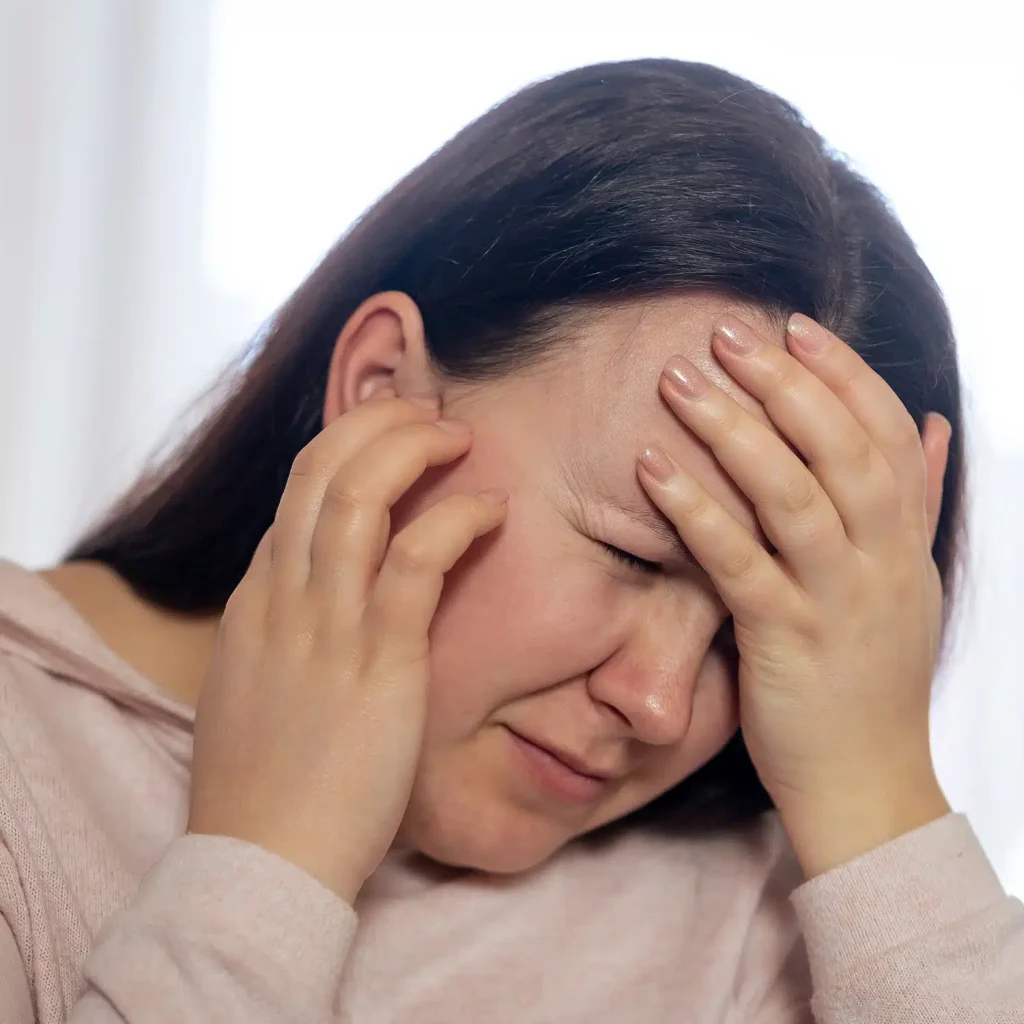Ear infections can cause significant discomfort, making individuals feel unwell and even infirm. While often associated with the need for antibiotics, current medical guidelines and treatment approaches have evolved, suggesting that not all ear infections necessitate prescription medication, particularly if they are viral rather than bacterial in origin. As a parent, you might find that your child’s ear infection may not even be prescribed antibiotics. In many cases, effective solutions for earaches, including some of the best home remedies for ear infections, can be found right at home. This comprehensive guide aims to shed light on various aspects of ear infections, from their causes and symptoms to practical home-based treatments.

Table of Contents
- What is an Ear Infection?
- Which Part of the Ear Can Become Infected?
- Causes of an Ear Infection
- Signs and Symptoms of an Ear Infection
- Treating Ear Infections at Home
- Best Home Remedies for an Ear Infection
- Over-the-counter Pain Reliever
- Cold or Warm Compress
- Olive Oil
- Naturopathic Drops
- Neck Exercise
- Distraction
- Ginger and Garlic
- Sleep without Putting Pressure on the Ear
- Final Thoughts
- Post Disclaimer
What is an Ear Infection?
Experiencing an ear infection can be incredibly painful and uncomfortable for both adults and children. While earaches cause significant agony, understanding the underlying causes and appropriate responses can lead to effective treatment. Children are more susceptible to ear infections than adults, with most experiencing at least one before the age of three. This increased susceptibility in children is primarily due to their shorter Eustachian tubes, which are more prone to fluid accumulation and infection. Ear infections can stem from bacteria, viruses, or, in rarer instances, yeast. Infections can manifest in three distinct areas of the ear:
- Outer ear infections (Otitis externa or swimmer’s ear): These often result from bacterial infection of the skin lining the ear canal. Frequent water immersion or damage to the ear canal, such as from cotton swabs, can increase the risk of developing an outer ear infection.
- Middle ear infections (Otitis media): Occurring behind the eardrum (tympanic membrane), these involve fluid and pus trapped in the adjacent hollow cavity of the facial bone. Middle ear infections are frequently a complication of the common cold in children, and most are viral, resolving spontaneously. Bacterial middle ear infections, however, may require antibiotics.
- Inner ear infections: These are rare and typically viral, often manifesting as structural inflammation of the inner ear, known as labyrinthitis. Given the inner ear’s role in balance and hearing, symptoms include balance disruption (vertigo), dizziness, and ringing in the ears (tinnitus). Inner ear infections, in both adults and children, are serious and necessitate prompt medical treatment.
Which Part of the Ear Can Become Infected?
The ear is a complex organ comprising three main parts, each playing a crucial role in hearing and balance. Infections can affect any of these sections:
- The outer ear: This includes the cartilaginous external structure (pinna) and the ear canal, which terminates at the eardrum (tympanic membrane).
- The middle ear: Situated behind the eardrum, this small, hollow space contains three tiny bones that transmit sound vibrations from the eardrum to the inner ear. Air pressure waves, focused by the pinna and traveling down the ear canal, cause the eardrum to vibrate, initiating a domino-like movement of these small bones.
- The inner ear: This section consists of two primary structures:
- The cochlea, which converts movements of the ear bones into nerve impulses that are sent to the brain for sound interpretation.
- The semicircular canals (part of the vestibular system), which contain three parts that interpret head motion, providing a sense of body balance and spatial orientation during movement.
Causes of an Ear Infection
While numerous factors can contribute to an ear infection, some common culprits include teeth grinding, tonsillitis, earwax buildup, sinus infections, and cavities. The most prevalent type is acute otitis media, or middle ear infection, characterized by inflammation and infection of the middle ear. The pain associated with acute otitis media stems from fluid accumulation behind the eardrum. Common indications of this infection include a general feeling of illness, slight hearing loss, pain within the ear, and fever. In infants and young children, signs may include increased crankiness, restlessness, and persistent pulling at their ears. Identifying these signs early can help in prompt treatment.
Signs and Symptoms of an Ear Infection
Recognizing the signs and symptoms of an ear infection is crucial for timely intervention. Common indicators of outer and middle ear infections often include:
- Pus draining from the ear
- Inflammation and redness in or around the ear
- Hearing problems or a noticeable decrease in hearing ability
- Mild to severe ear pain
Specific signs for swimmer’s (outer) ear can also include intense itching in the ear canal. For middle and inner ear infections, additional symptoms may present as:
- A feeling of fullness or pressure within the ear
- Problems with balance or coordination
- Fever
Inner ear infections, which are less common but more severe, can lead to:
- Labyrinthitis (infection and inflammation of the inner ear structures)
- Tinnitus (a persistent ringing or buzzing sound in the ear)
- Vertigo (a sensation of spinning or dizziness)
- Vomiting and nausea, often due to balance disruption
Prompt attention to these symptoms can prevent complications.
Treating Ear Infections at Home
Many outer and middle ear infections can be effectively managed at home using over-the-counter (OTC) medications and various home remedies targeting symptoms like inflammation and pain. For outer ear infections, recurrent or prolonged exposure to water is a common cause. Therefore, avoiding water in the ear canal until the pain completely subsides is often the most effective treatment. While the infection itself may take several days to heal, the pain typically diminishes within a week. Notably, warmer water increases the likelihood of developing swimmer’s ear, explaining why summer swimmers are more prone to outer ear infections than winter swimmers.
For middle ear infections, numerous studies indicate that viruses are often the causative agents. In such cases, managing the ear pain for two to three days allows the body’s natural immune system to fight off the infection. However, if symptoms persist or worsen, or if the pain is severe, it is advisable to consult a healthcare professional. Inner ear symptoms may sometimes stem from non-infectious causes, and true inner ear infections are rare in both adults and children, but always warrant medical evaluation when they occur due to potential severity.
Best Home Remedies for an Ear Infection
While some ear infections require medical intervention, several natural remedies can provide significant relief from ear pain and discomfort. Here are some of the most common and effective home remedies for an ear infection:
1. Over-the-counter Pain Reliever The American Academy of Pediatrics (AAP) recommends OTC pain relievers such as acetaminophen and ibuprofen for managing pain associated with acute otitis media, a common type of painful ear infection. These medications can be safely used with or without antibiotics and are also effective in reducing fever. Always adhere to the dosing instructions provided on the label. When treating children, discuss appropriate dosages with your doctor, as many OTC pain relievers are available in child and infant versions. It is crucial to remember that aspirin should not be administered to children under 16 years old due to the risk of Reye’s syndrome.
2. Cold or Warm Compress Applying either a cold compress (like an ice pack) or a warm compress (such as a damp washcloth or heating pad) is a widely used method for pain reduction. This technique can also be effectively applied to ear infections for both children and adults. For optimal results, place the compress over the affected ear and alternate between warm and cold applications every ten minutes. If you find one temperature more soothing than the other, you can use a single compress continuously. The choice between warm and cold often depends on individual preference and skin sensitivity.
3. Olive Oil Olive oil has been a traditional remedy for ear pain for generations. While scientific evidence directly proving its efficacy as a primary treatment for ear infections is limited, anecdotal reports suggest that a few warmed drops of olive oil in the ear canal may help alleviate discomfort and pain associated with ear infections. This method is generally considered safe, but it’s always advisable to discuss its use with your doctor, especially when dealing with children’s ear infections. Crucially, ensure the olive oil is not warmer than body temperature to prevent burning the eardrum; using a thermometer to check the temperature is highly recommended.
4. Naturopathic Drops Naturopathic eardrops, formulated from various herbal extracts, are available in some drug stores and online. A particular study indicated that drops containing herbal extracts in an olive oil base could be as effective as traditional OTC ear drops for alleviating ear pain. Some individuals even claim that naturopathic ear drops offer superior relief compared to conventional medications. As with any alternative treatment, consulting a healthcare professional before use, especially for children, is prudent.
5. Neck Exercise Some earaches stem from pressure within the ear canal. Specific neck exercises can help relieve this pressure. Neck rotation exercises are particularly beneficial. To perform these:
- Sit upright with both feet flat on the floor.
- Slowly rotate your neck to the right until your head is parallel with your shoulder.
- Repeat the rotation to the left side, bringing your head parallel with your left shoulder.
- Raise your shoulders high, as if trying to touch your ears with them.
- Perform these movements slowly, holding each stretch gently for a count of five, then relax.
- Repeat these exercises throughout your waking hours to help alleviate ear pressure.
6. Distraction For children suffering from earaches, distraction can be a highly effective pain management technique. Engaging them in enjoyable activities can shift their focus away from the discomfort. Consider:
- Putting on their favorite movie or cartoon.
- Surprising them with a new coloring book or craft project.
- Having a fun bubble bath with plenty of toys.
- Allowing them to play a favorite game on your tablet or phone.
- Offering their favorite snack.
- If your child is teething, providing cooled teething toys for chewing can also be distracting and soothing. The distraction method also works for adults; immerse yourself in a good book, watch a favorite movie, or engage in a hobby to divert your attention from the ear pain.
7. Ginger and Garlic Ginger possesses natural anti-inflammatory properties that can significantly soothe pain from ear infections. To use ginger, apply ginger juice or strained oil warmed with ginger around the outer ear canal. It is important never to put ginger juice or ginger oil directly into the ear canal, for either children or adults. Garlic is known for both its pain-relieving and antibiotic properties. To prepare, soak crushed garlic in warm sesame or olive oil. Carefully strain out the garlic pieces and then gently apply the infused oil around the outer ear canal. Again, avoid direct instillation into the ear canal.
8. Sleep without Putting Pressure on the Ear Certain sleep positions can exacerbate ear pain, while others can help reduce it. For instance, sleeping with the affected ear elevated is generally better than lying on it. This position can facilitate better drainage from the ear if needed. Additionally, elevating your head with an extra pillow can also promote faster drainage and relieve pressure, contributing to a more comfortable night’s rest during an ear infection.

Final Thoughts
While home remedies and over-the-counter medications can effectively treat many ear infections, there are instances where medical consultation is essential. If your earache is severe, or if you experience accompanying symptoms like persistent hearing loss or fever, it is imperative to seek professional medical attention. In such cases, visiting an ear, nose, and throat (ENT) specialist might be necessary. Neglecting an ear infection is strongly discouraged, as it can lead to serious and potentially permanent complications, including chronic hearing loss, balance issues, or even the spread of the infection to other parts of the body. Timely and appropriate treatment is key to preventing such adverse outcomes and ensuring complete recovery.



